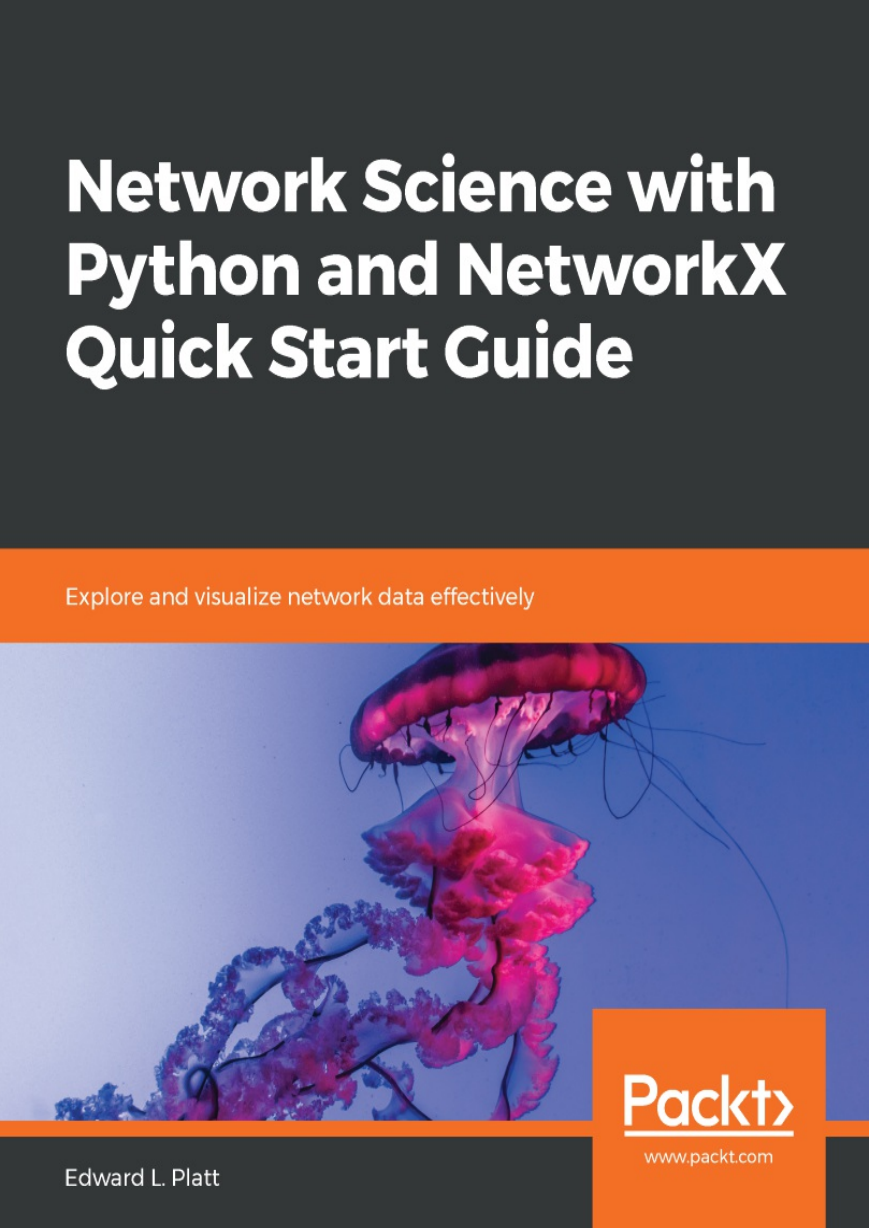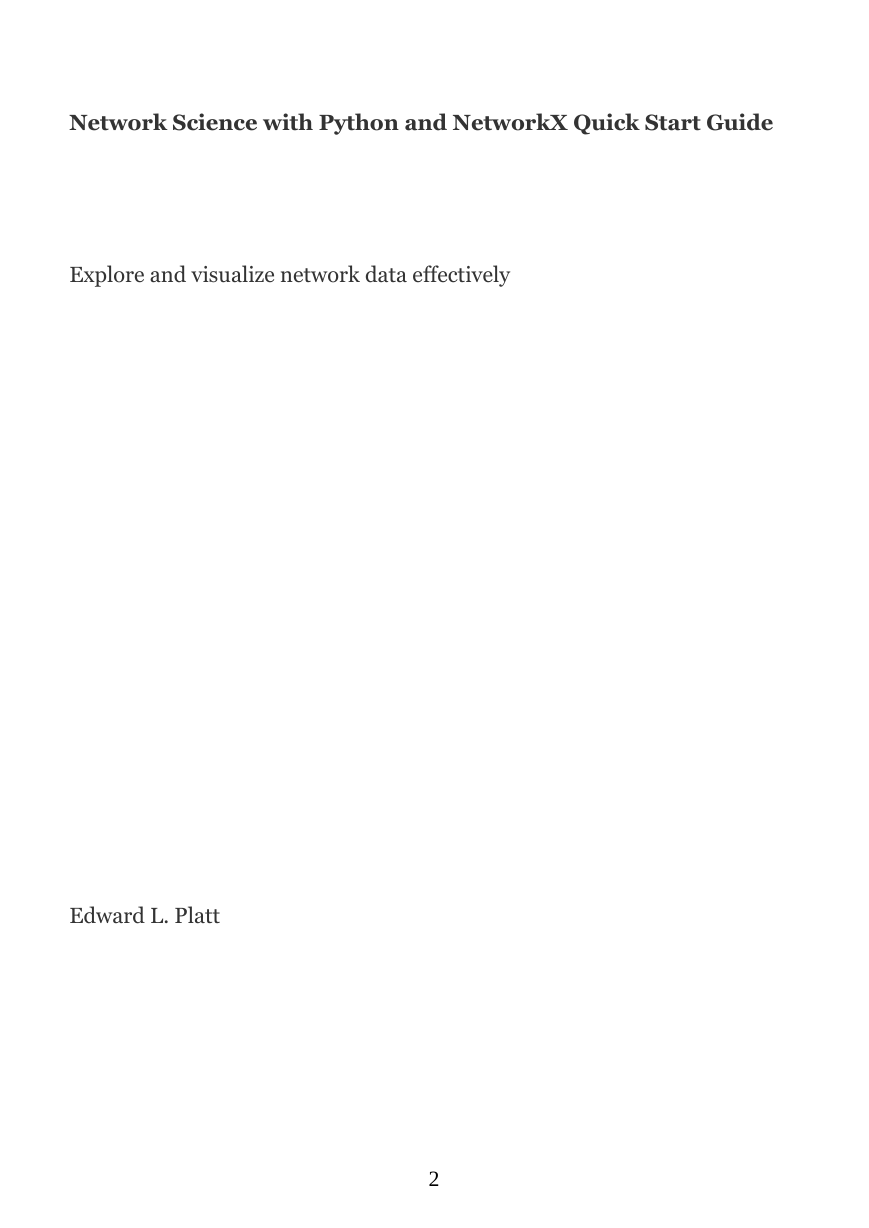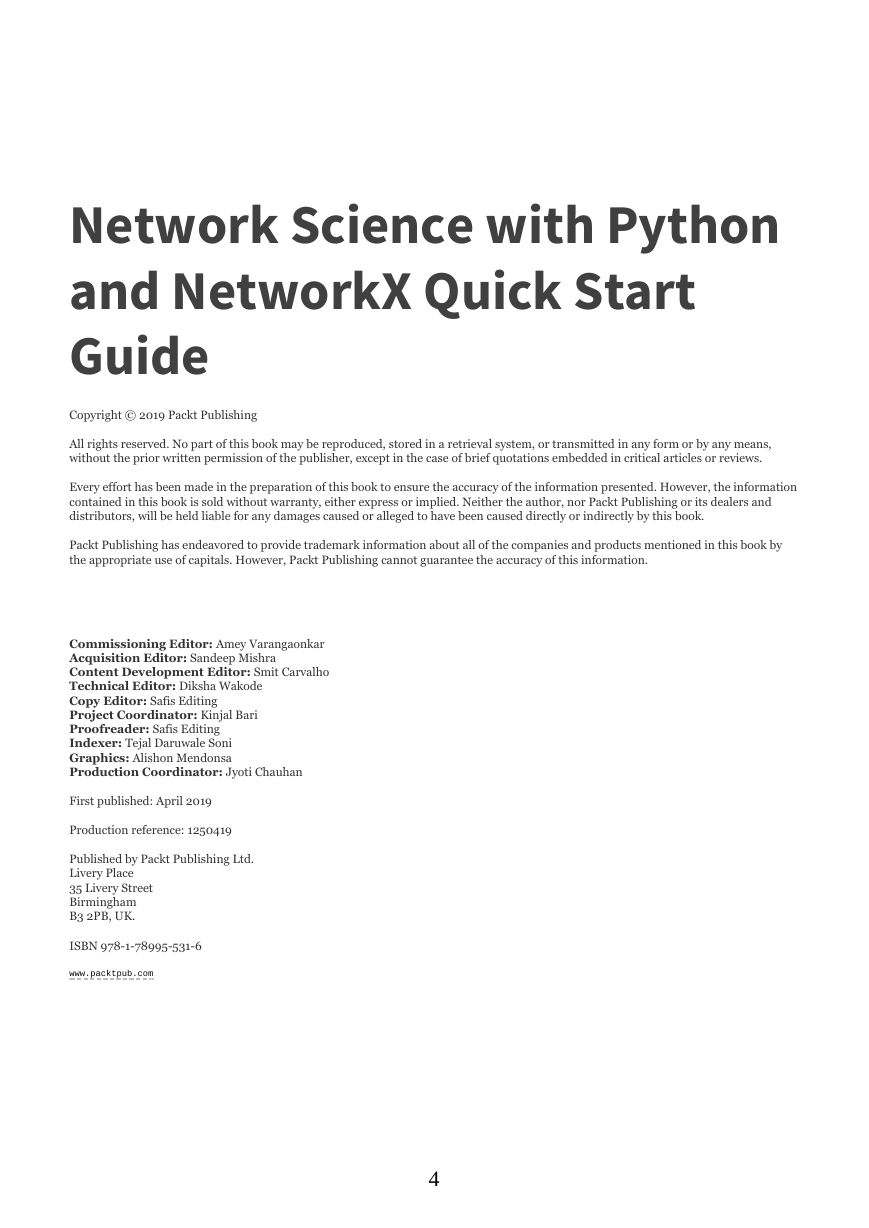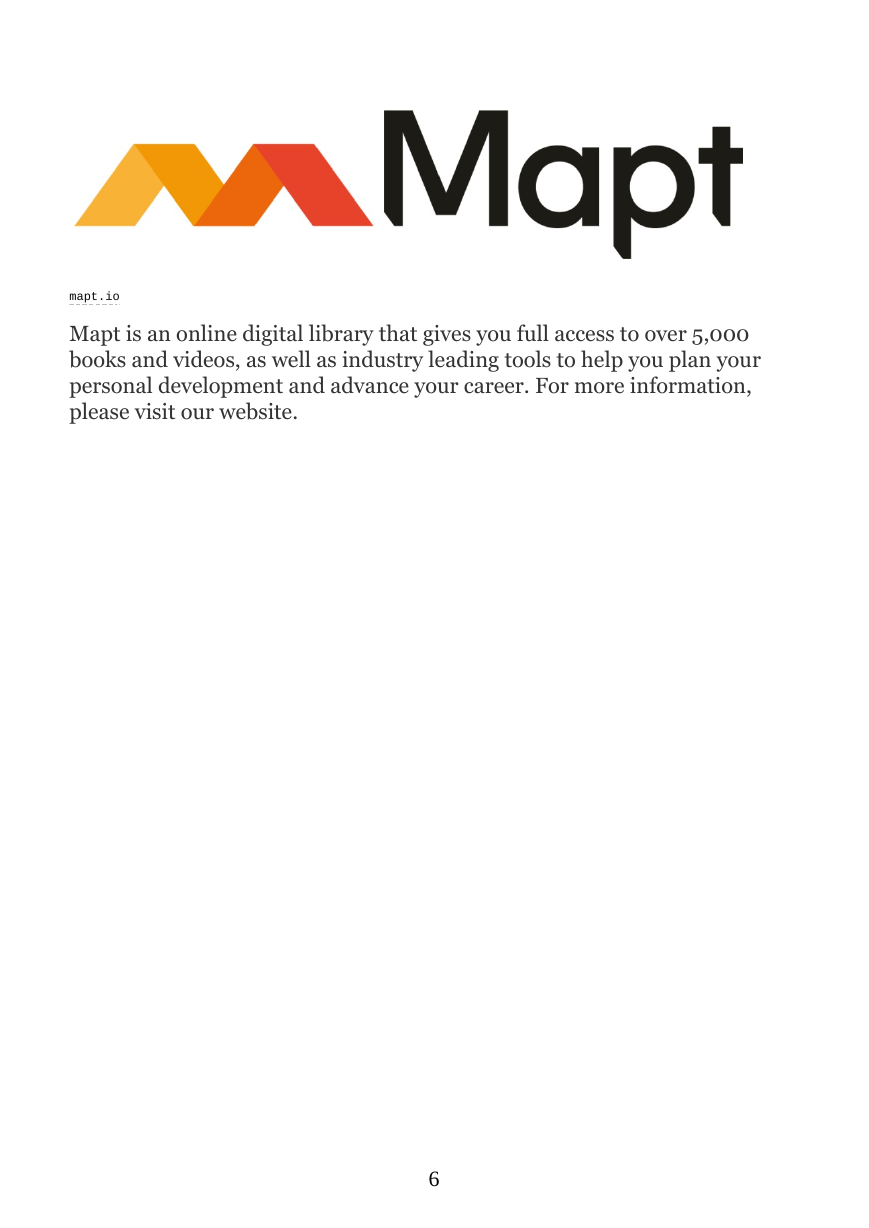Title Page
Copyright and Credits
Network Science with Python and NetworkX Quick Start Guide
Dedication
About Packt
Why subscribe?
Packt.com
Contributors
About the author
About the reviewer
Packt is searching for authors like you
Preface
Who this book is for
What this book covers
To get the most out of this book
Download the example code files
Conventions used
Get in touch
Reviews
What is a Network?
Network science
The history of network science
Network science today
What is a network?
Nodes and edges
Visualizing networks
What is NetworkX?
Types of networks
Directed networks
Weighted networks
Understanding edges
Social networks
Flow networks
Similarity networks
Spatial networks
Your first network in NetworkX
Summary
References
Working with Networks in NetworkX
The Graph class – undirected networks
Adding attributes to nodes and edges
Adding edge weights
The DiGraph class – when direction matters
MultiGraph and MultiDiGraph – parallel edges
Summary
References
From Data to Networks
Modeling your data
Reading and writing network files
Creating a network with code
Summary
References
Affiliation Networks
Nodes and affiliations
Affiliation networks in NetworkX
Projections
Summary
References
The Small Scale - Nodes and Centrality
Centrality – finding key nodes
Bridges, brokers, and bottlenecks – betweenness centrality
Hubs – eigenvector centrality
Closeness centrality
Local clustering
Summary
References
The Big Picture - Describing Networks
The global structure of networks
Datasets
Diameter and mean shortest path
Global clustering
Measuring resilience
Minimum cuts
Connectivity
Centralization and inequality
Summary
References
In-Between - Communities
Communities – networks within networks
Community detection in NetworkX
Modularity maximization
Visualizing
An online social network
Girvan-Newman – betweenness-based communities
Cliques
K-cores
Summary
References
Social Networks and Going Viral
Social networks
Strong and weak ties
Tie strength
Bridge span
Comparing strength and span
The small world problem
Ring networks
A real social network
Random networks
Watts-Strogatz networks
Contagion – how things spread
Simple contagion
Complex contagion
Summary
References
Simulation and Analysis
Watts-Strogatz and small worlds
Preferential attachment and heavy-tailed networks
Configuration models
Agent-based models
Summary
References
Networks in Space and Time
Locations and events
Networks in space
Gravity models
Working with spatial data
Gravity model for air travel
Residual network
Network properties
Networks in time
Layered networks
Working with time data
The evolution of network properties
Summary
References
Visualization
Beyond the hairball
The circular layout
The shell layout
The force-directed layout
Null models
Summary
Conclusion
The practice of network science
Learning more
Advances in network science
The impact of network science
Appendix
Adjacency matrices
Biadjacency matrices
Modularity
Other Books You May Enjoy
Leave a review - let other readers know what you think
















 2023年江西萍乡中考道德与法治真题及答案.doc
2023年江西萍乡中考道德与法治真题及答案.doc 2012年重庆南川中考生物真题及答案.doc
2012年重庆南川中考生物真题及答案.doc 2013年江西师范大学地理学综合及文艺理论基础考研真题.doc
2013年江西师范大学地理学综合及文艺理论基础考研真题.doc 2020年四川甘孜小升初语文真题及答案I卷.doc
2020年四川甘孜小升初语文真题及答案I卷.doc 2020年注册岩土工程师专业基础考试真题及答案.doc
2020年注册岩土工程师专业基础考试真题及答案.doc 2023-2024学年福建省厦门市九年级上学期数学月考试题及答案.doc
2023-2024学年福建省厦门市九年级上学期数学月考试题及答案.doc 2021-2022学年辽宁省沈阳市大东区九年级上学期语文期末试题及答案.doc
2021-2022学年辽宁省沈阳市大东区九年级上学期语文期末试题及答案.doc 2022-2023学年北京东城区初三第一学期物理期末试卷及答案.doc
2022-2023学年北京东城区初三第一学期物理期末试卷及答案.doc 2018上半年江西教师资格初中地理学科知识与教学能力真题及答案.doc
2018上半年江西教师资格初中地理学科知识与教学能力真题及答案.doc 2012年河北国家公务员申论考试真题及答案-省级.doc
2012年河北国家公务员申论考试真题及答案-省级.doc 2020-2021学年江苏省扬州市江都区邵樊片九年级上学期数学第一次质量检测试题及答案.doc
2020-2021学年江苏省扬州市江都区邵樊片九年级上学期数学第一次质量检测试题及答案.doc 2022下半年黑龙江教师资格证中学综合素质真题及答案.doc
2022下半年黑龙江教师资格证中学综合素质真题及答案.doc